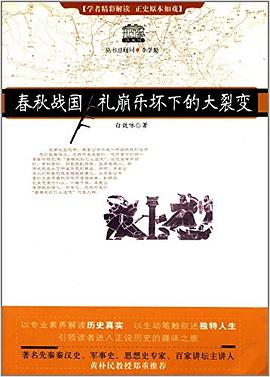TCP-IP Sockets in Java. Practical Guide for Programmers 电子书下载
The networking capabilities of the Java platform have been extended considerably since the first edition of the book. This new edition covers version 1.5-1.7, the most current iterations, as well as making the following improvements: The API (application programming interface) reference sections in each chapter, which describe the relevant parts of each class, have been replaced with (i) a summary section that lists the classes and methods used in the code, and (ii) a ?gotchas? section that mentions nonobvious or poorly-documented aspects of the objects. In addition, the book covers several new classes and capabilities introduced in the last few revisions of the Java platform. New abstractions to be covered include NetworkInterface, InterfaceAddress, Inet4/6Address, SocketAddress/InetSocketAddress, Executor, and others; extended access to low-level network information; support for IPv6; more complete access to socket options; and scalable I/O. The example code is also modified to take advantage of new language features such as annotations, enumerations, as well as generics and implicit iterators where appropriate. Most Internet applications use sockets to implement network communication protocols. This book`s focused, tutorial-based approach helps the reader master the tasks and techniques essential to virtually all client-server projects using sockets in Java. Chapter 1 provides a genral overview of networking concepts to allow readers to synchronize the concepts with terminology. Chapter 2 introduces the mechanics of simple clients and servers. Chapter 3 covers basic message construction and parsing. Chapter 4 then deals with techniques used to build more robust clients and servers. Chapter 5 (NEW) introduces the scalable interface facilities which were introduced in Java 1.5, including the buffer and channel abstractions. Chapter 6 discusses the relationship between the programming constructs and the underlying protocol implementations in more detail. Programming concepts are introduced through simple program examples accompanied by line-by-line code commentary that describes the purpose of every part of the program. The book`s Web site contains many examples of command-based sockets-related code discussed throughout the book. No other resource presents so concisely or so effectively the material necessary to get up and running with Java sockets programming. KEY FEATURES * Focused, tutorial-based instruction in key sockets programming techniques allows reader to quickly come up to speed on Java applications. * Concise and up-to-date coverage of the most recent platform (1.7) for Java applications in networking technology * Provides code for all example programs via a companion Web site to let the reader see the important objects and methods in context and to understand the purpose of each line of code.
尊敬的读者:
欢迎您访问我们的网站。本站的初衷是为大家提供一个共享学习资料、交换知识的平台。每位用户都可以将文件上传至网盘并分享。
然而,随着用户上传的资料增多,我们发现部分不宜或版权问题的书籍被分享到了本站。
为此,我们已经关闭了分享入口,并进行了多次书籍审查,但仍有部分内容未能彻底审查到位。
在此,我们恳请广大读者与我们共同监督,如发现任何不宜内容,请 点击此处 进行举报,我们会第一时间处理并下架相关内容。
希望我们能共建一个文明社区!感谢您的理解与支持!
猜你喜欢
- Building eCommerce Applications - Developers from DevZone 电子书下载
- 《正午2:此地不宜久留》正午系列丛书珍藏版 电子书下载
- 《翻转世界:互联网思维与新技术如何改变未来》 [美]尼克·比尔顿文字版 电子书下载
- 《魏斯曼的演讲大师课2:答的艺术》杰瑞·魏斯曼文字版 电子书下载
- 《图解行为背后的心理奥秘》 山边彻文字版 电子书下载
- 《大潜能》肖恩·埃科尔 电子书下载
- 《解放你的大脑》[法]伊德里斯?阿贝尔坎文字版 电子书下载
- 《说话的魅力:刘墉沟通秘笈》刘墉作品集文字版 电子书下载
- 《以交易为生 II:卖出的艺术》【美】亚历山大·埃尔德文字版 电子书下载
- 《分析心理学的理论与实践》卡尔·荣格文字版 电子书下载
- 《刻意练习:如何从新手到大师》安德斯·艾利克森/ 罗伯特·普尔文字版 电子书下载
- HTML5 and CSS3 Responsive Web Design Cookbook - Benjamin LaGrone 电子书下载












